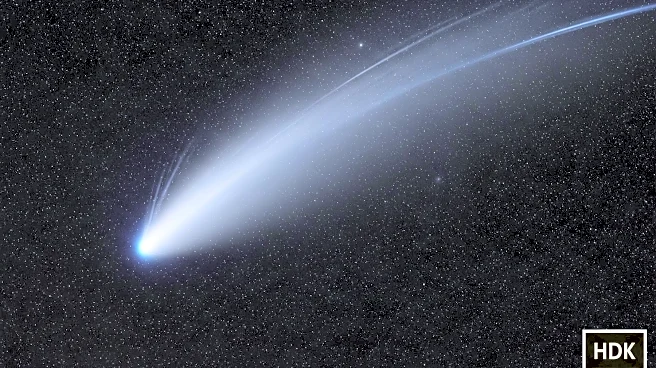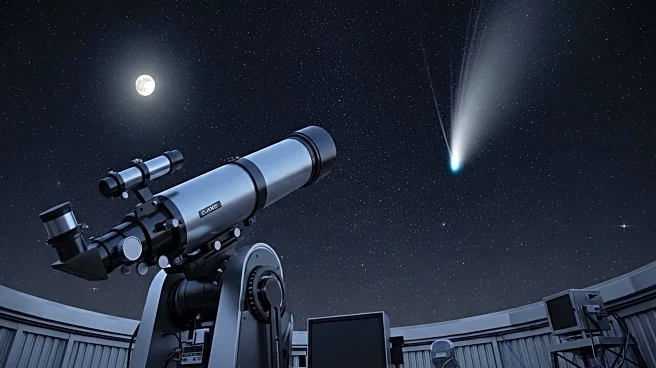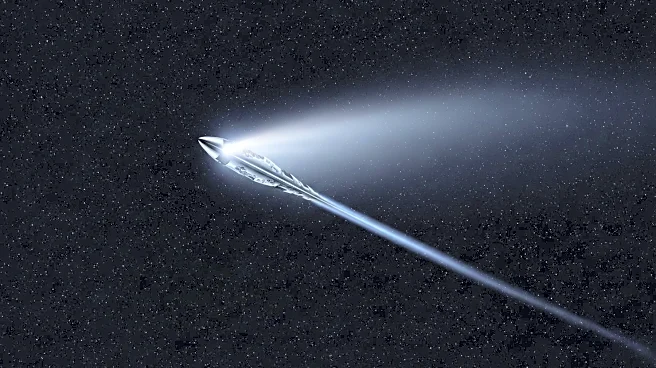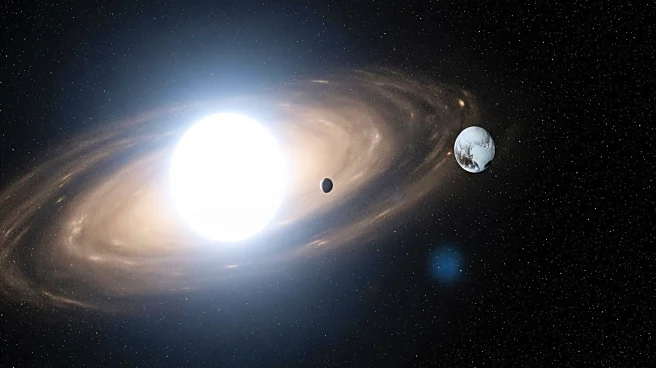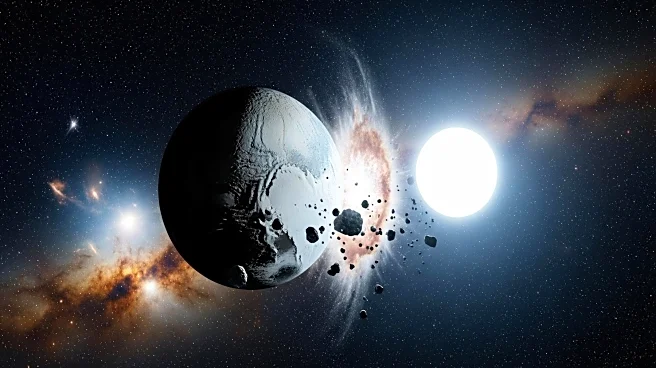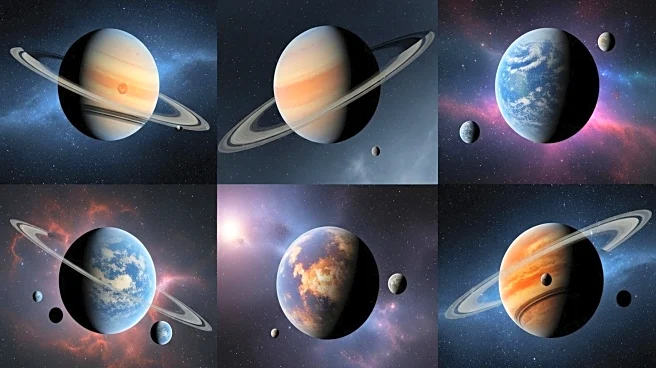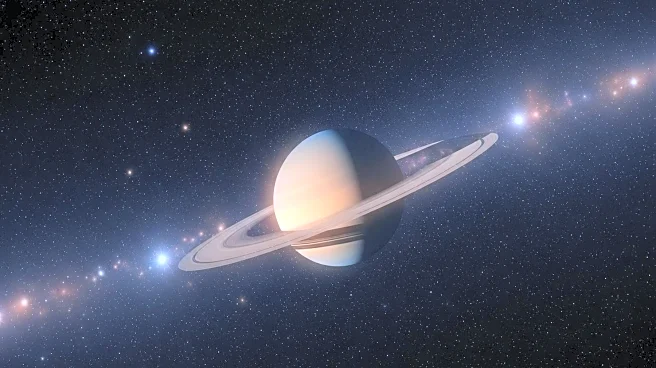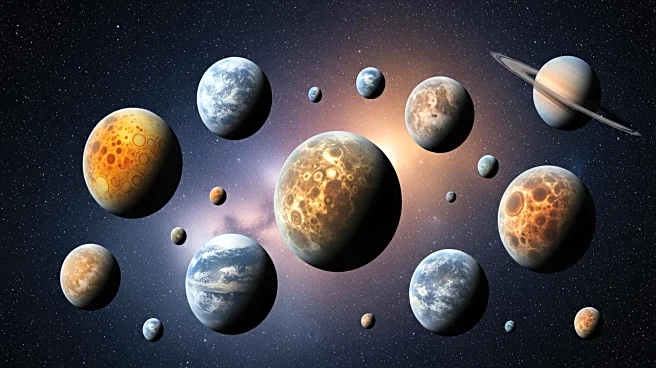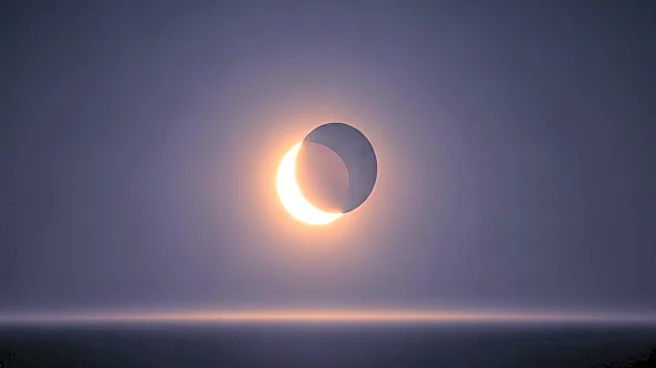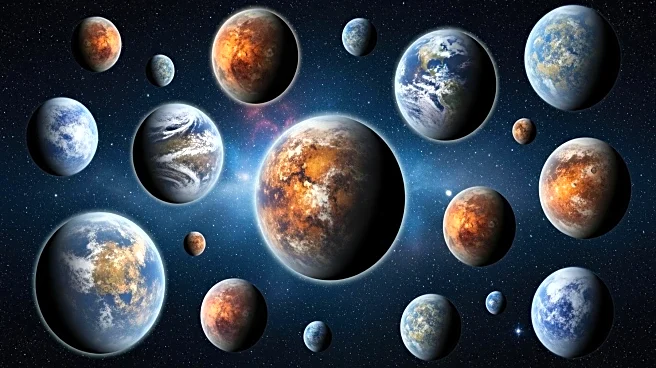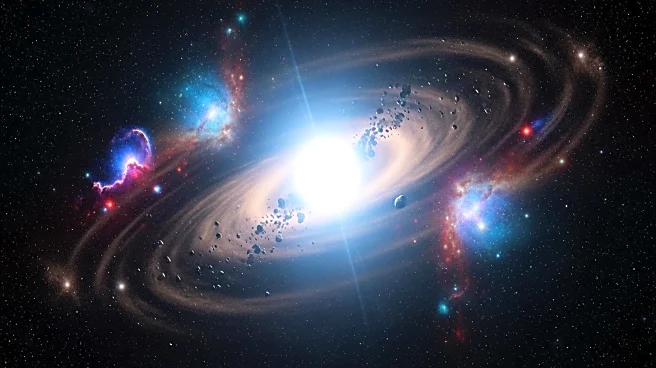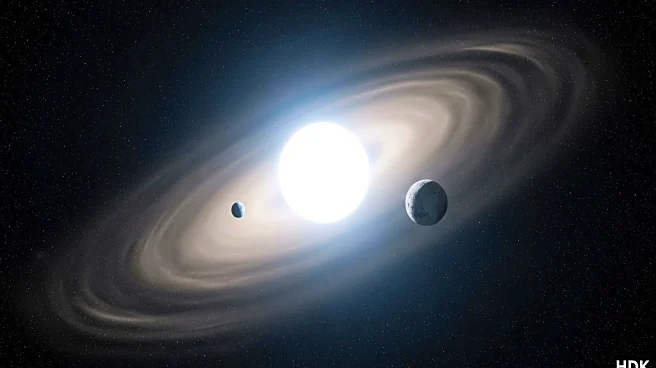What is the story about?
What's Happening?
Astrophysicist Susanne Pfalzner has proposed a new theory regarding the interstellar object 3I/ATLAS, suggesting it could play a role in planet formation. At a planetary science conference in Germany, Pfalzner presented the idea that such objects might act as seeds for the formation of gas giants like Jupiter. Her theory builds on the standard accretion model, which describes how tiny particles coalesce into planets. However, simulations show these particles often bounce off each other or shatter, raising questions about how large planets form quickly around young stars. Pfalzner posits that interstellar objects, formed in other star systems and captured by the gravity of young stars, could be the missing ingredient. Once embedded in the swirling disks of dust and gas around these stars, they may accelerate planet formation.
Why It's Important?
Pfalzner's theory could significantly impact our understanding of planet formation, particularly around stars larger than the Sun. If interstellar objects like 3I/ATLAS are indeed catalysts for planet formation, this could explain the prevalence of giant planets around such stars. The theory suggests that higher-mass stars are more efficient at capturing these objects, leading to faster planet formation. This insight could reshape models of solar system development and influence future astronomical research. Understanding the role of interstellar objects in planet formation could also inform the search for life beyond Earth, as the presence of gas giants can affect the habitability of surrounding planets.
What's Next?
Further research and simulations are needed to validate Pfalzner's theory. Astronomers may focus on observing young star systems to identify interstellar objects and study their interactions with dust and gas disks. If Pfalzner's hypothesis holds, it could lead to new methods for detecting and analyzing planet formation processes. Additionally, the theory may prompt a reevaluation of existing models and encourage the exploration of other interstellar objects as potential planet-forming seeds.
Beyond the Headlines
Pfalzner's theory challenges traditional views of planet formation and highlights the complexity of cosmic processes. It underscores the importance of considering unconventional ideas in scientific exploration. The concept of interstellar objects as planet seeds also raises questions about the origins and journeys of these objects, potentially offering insights into the dynamics of star systems and the universe's evolution.
AI Generated Content
Do you find this article useful?
